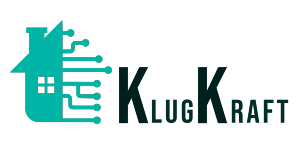Energy efficiency automation is a subset of home automation that focuses on optimizing energy usage and reducing energy consumption within a home or building through the integration of smart technology and automation features. It aims to minimize energy waste, lower utility costs, and reduce carbon emissions by intelligently controlling and managing various energy-consuming devices and systems. Here’s an overview of energy efficiency automation:
- Smart Thermostats: Smart thermostats play a crucial role in energy efficiency automation by optimizing heating, ventilation, and air conditioning (HVAC) systems. These devices use sensors and algorithms to learn user preferences, adjust temperature settings based on occupancy patterns, and optimize energy usage to maintain comfort while minimizing energy waste. They can also provide energy usage reports and recommendations to help homeowners identify opportunities for energy savings.
- Lighting Control: Energy efficiency automation systems include smart lighting solutions that optimize lighting usage and reduce electricity consumption. This may involve the use of occupancy sensors, daylight sensors, and scheduling features to automatically turn off lights in unoccupied rooms, dim lights when natural daylight is available, and adjust lighting levels based on user preferences and activity patterns. LED bulbs and fixtures are also commonly used to reduce energy usage and extend the lifespan of lighting systems.
- Appliance Control: Energy efficiency automation extends to other household appliances and devices, such as refrigerators, washing machines, dishwashers, and home electronics. Smart plugs, power strips, and energy monitoring devices can be used to monitor energy usage, schedule operation times, and remotely control appliances to minimize standby power consumption and optimize energy usage based on utility rates and demand.
- Integration with Renewable Energy Sources: Energy efficiency automation systems can integrate with renewable energy sources such as solar panels, wind turbines, and geothermal systems to maximize energy efficiency and sustainability. Smart inverters, energy storage systems, and grid-connected technologies can be used to manage and optimize the use of renewable energy, store excess energy for later use, and balance energy supply and demand in real-time.
- Energy Monitoring and Analytics: Energy efficiency automation systems provide energy monitoring and analytics capabilities to track and analyze energy usage patterns, identify energy-intensive appliances and devices, and pinpoint areas for improvement. Users can access real-time and historical energy data, receive personalized recommendations for energy-saving measures, and set energy-saving goals to track progress over time.
- Integration with Time-of-Use Rates: Energy efficiency automation systems can integrate with utility time-of-use (TOU) rates and demand response programs to optimize energy usage and reduce electricity costs. Smart appliances, thermostats, and energy management systems can adjust operation times and settings based on TOU rate schedules and peak demand periods to minimize energy usage during high-cost periods and take advantage of lower rates during off-peak hours.
- Remote Access and Control: Energy efficiency automation systems offer remote access and control capabilities, allowing homeowners to monitor and manage their energy usage and devices from anywhere using their smartphones or other internet-connected devices. This enables users to adjust settings, schedule operations, and receive alerts and notifications in case of energy-related issues or anomalies, providing greater flexibility and control over energy consumption.
- Integration with Home Automation Ecosystem: Energy efficiency automation systems can be integrated with other smart home devices and systems, such as lighting, HVAC, and security, to create a more comprehensive and interconnected home automation ecosystem. For example, energy usage data can be used to automate lighting and temperature settings based on occupancy patterns or integrate with security systems to optimize energy usage during periods of inactivity.
Overall, energy efficiency automation offers numerous benefits, including reduced energy consumption, lower utility costs, increased comfort and convenience, and enhanced sustainability. By leveraging smart technology and automation, homeowners can create more energy-efficient homes, reduce their environmental footprint, and contribute to a cleaner and more sustainable future.

